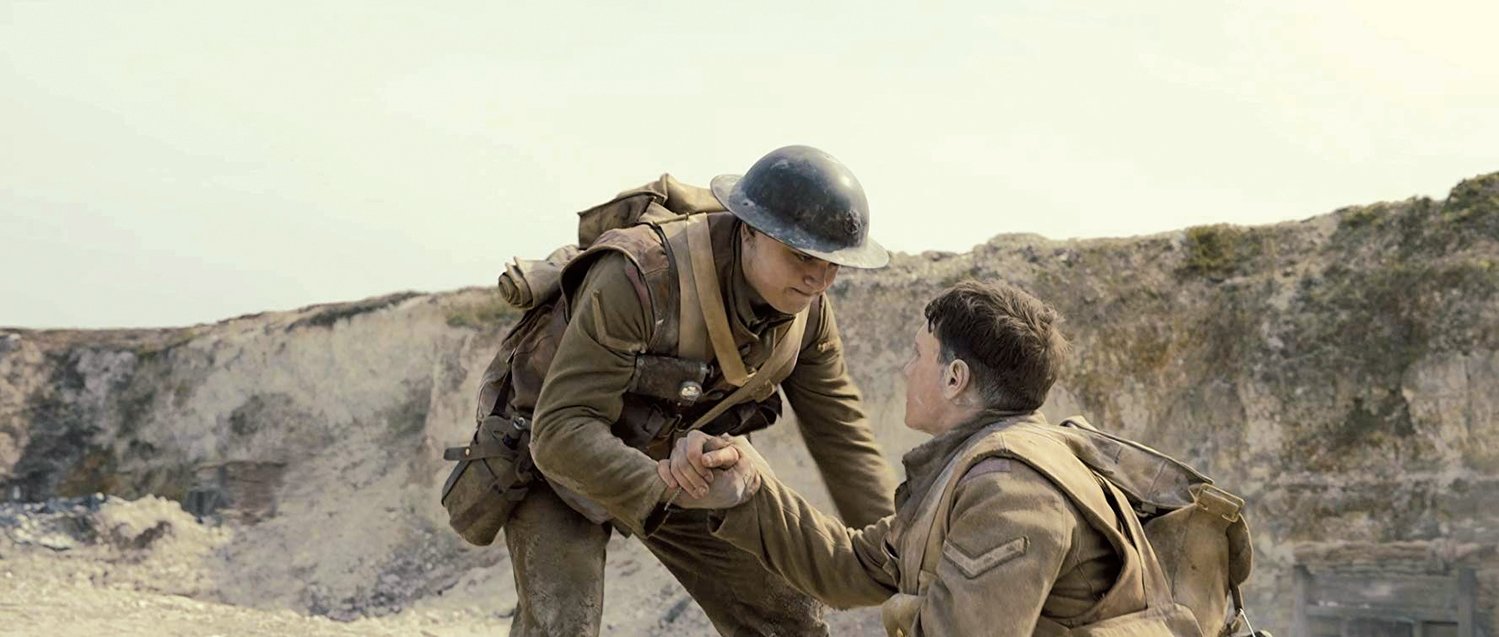
Regardless of the cast listing, the undisputed star of “1917” is Roger Deakins. The esteemed 70-year-old cinematographer, who finally won an Oscar two years ago for “Blade Runner 2049,” presents arguably his tour de force in director Sam Mendes’s World War I epic.
Viewers will naturally gawk at Deakins nimbly editing long takes together so the entire film appears to be one continuous take. Frankly, it’s a device that’s stylistically stunning yet narratively questionable. But it’s Deakins’s otherwordly camerawork, a series of “How did he do it?” tracking shots and roving God’s eye perspectives that are truly jaw-dropping. “1917” would have been a great silent film, and that’s a purposely backhanded compliment.
In the midst of the First World War, two British soldiers stationed in northern France, Lance Corporals William Schofield and Tom Blake, are tasked to deliver a warning to a battalion of 1,600 men — including Blake’s brother — near the front line who are planning to attack German forces. Intelligence has deciphered that the Germans are feigning retreat and instead intend to ambush and mostly certainly slaughter the battalion.
The journey that follows feels akin to the ascending levels of a World War I video game. Schofield and Blake must navigate various era-appropriate milieus: winding trenches, no man’s land, a booby-trapped tunnel, an overhead dogfight, a bombed-out village still littered with armed threats, and so on. Along this odyssey, Mendes dots the hellscape with the ghastly consequences of war: when the duo leap into a crater to escape detection, they nearly sink through the rotted remains of dead soldiers piled along the bottom. But the most harrowing images are just the shell-shocked soldiers hunkered down in muddy, bloody ditches, their far-away gazes masking unspoken horrors.
In the town of Écoust-Saint-Mein, Schofield stumbles across a mother and her infant daughter living in an underground basement. When the young widow asks Schofield to remain with them, this seemingly superfluous scene becomes one of the film’s most poignant. For a moment, Schofield contemplates the offer, tempted by the simple pleasures of family and companionship that are foreign and forgotten in this dystopian world.
Yet while the continuous take construct is visually engrossing, its real-time pace pads the two-hour running time with lots of narrative downtime. While the set designs are potent, meandering through them sometimes comes at the expense of character and plot development. One main character departs far too soon, while virtually every supporting character is gone after one scene (and speech). Consequently, the audience never achieves any deep emotional connection with anyone or anything other than the arresting imagery.
“1917” is well worth viewing, especially on a big screen in a theater. That’s where the exacting, eye-popping visuals are truly larger-than-life. The rest of the story, however, feels regrettably small.